Anthurium with black flowers: varieties and cultivation features
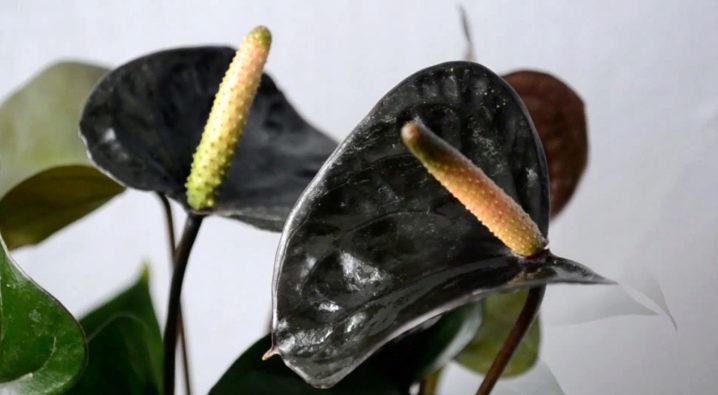
The genus Anthurium of the Aroid family has more than 800 plant species growing in tropical forests. They vary in size, but they all have colorful heart-shaped flowers and dark green leathery leaves. Black-flowered varieties are especially popular because of their uniqueness.
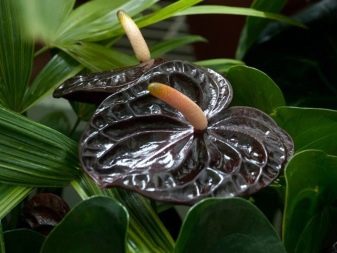
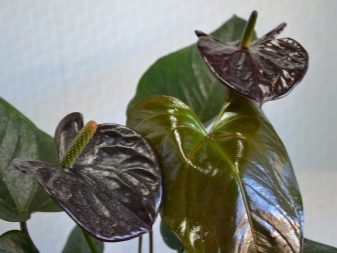
Description of varieties
Of the most common types with black flowers there are several.
- Black Queen. Differs in the presence of a red tint on the flowers and bedspread. The buds open and delight with their dark cherry tone. Growers appreciated the variety for its bright green leaves that do not change color regardless of the season.
This is a hybrid, so you should not be surprised if flowers of different shades appear on the same bush. They can be deep black or red.
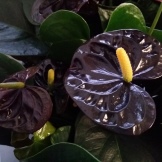
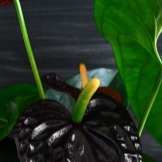
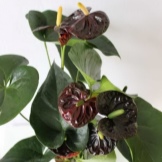
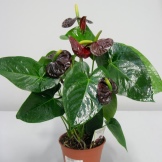
- Black Love. This shrub, which is evergreen, will delight you with its height and spreading. It can grow up to 0.5 m at home. The leaves are of an even dark green hue, the flower bud is at first beige, stretches upward, as soon as it begins to ripen and bloom, it changes its shade. The bedspread is maroon, it has a heart-shaped shape.

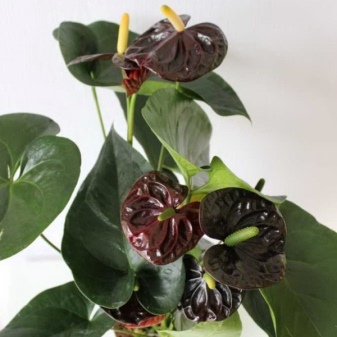
- Black Beauty. It is not found among plant breeders as often as other varieties. It can only be distinguished by the shape of the bedspread: it resembles a tulip. When creating ideal conditions indoors, the flower can reach a height of 65 cm. The leaves are green, on the back you can see burgundy veins.
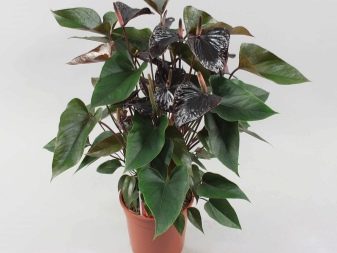
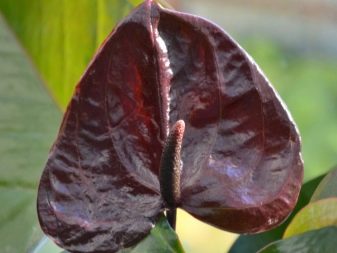
- Black Dragon. It is one of the large varieties, it is distinguished by decorative black flowers and an elongated bedspread. Petioles are small, lanceolate leaves are formed on them. The bush, with proper care, turns out to be quite lush. Over time, the leaf plate can change color: burgundy streaks and blotches appear on the green surface.
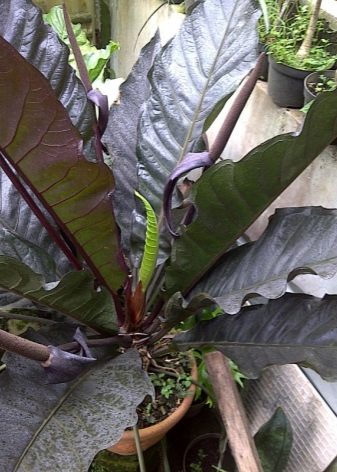
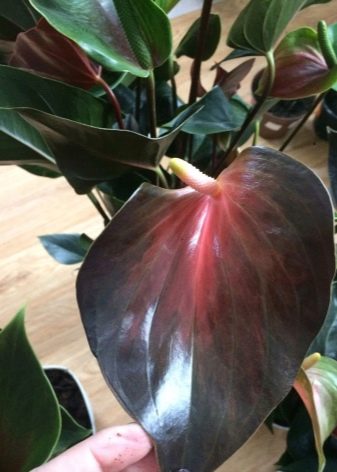
- Black Paris. It fully justifies its sophisticated name; this variety can be distinguished by the curling tips of the leaves. The leaves are quite large, the bedspread is heart-shaped. On the front side, the leaves are dark, on the back, on the contrary, light.
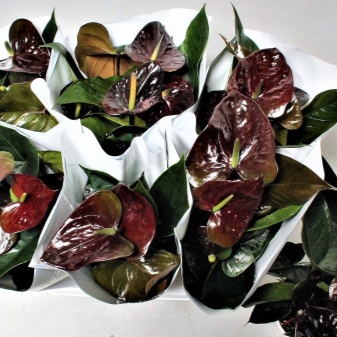
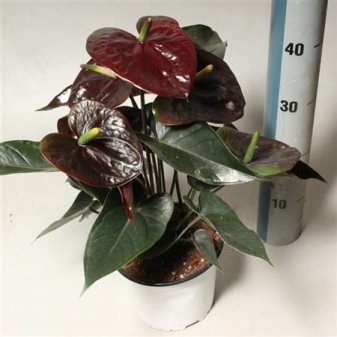
- Black Love. The plant can grow to medium size: a maximum of 50 cm. The leaves are heart-like, rich green, covered with velvet on the back and have barely noticeable veins. The bud is green at first, but darkens as it ripens.
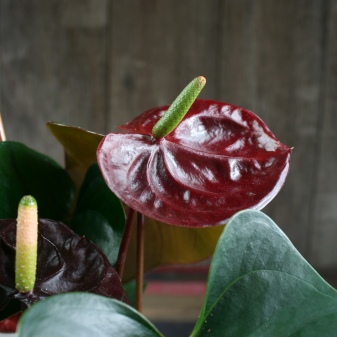
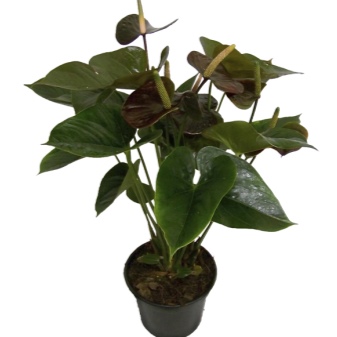
- "Black Prince". Luxurious hybrid bush. It differs in that it can reach a height of more than 1 m.
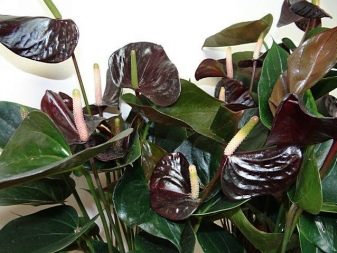
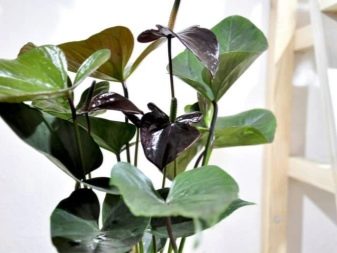
Reproduction
There are several ways to propagate anthurium:
- dividing the bush;
- aerial roots;
- seeds;
- cuttings.
A young plant needs to be separated until it reaches maturity, as its root system is constantly growing. Every two years, the grower has the opportunity to split the flower. To do this, you just need to free the root system from the soil, then gently stretch it into two parts and plant in separate containers. It must be remembered that the planted part will not bloom profusely in the first year.
As the anthurium grows, the roots come out to the surface. They can simply be covered with soil, or they can be cut off and planted to form a new bush. The instrument must be disinfected, the cut is treated with a solution of activated carbon to prevent infection with a fungal or bacterial infection.The root is placed in a standard soil for anthurium, watered, sometimes creating a greenhouse effect. After 4–6 weeks, the first stems and leaves will begin to appear.


Anthuriums grow easily from cuttings. Cutting is performed step by step:
- choose a stem at least 15 cm long with 2 or 3 sets of leaves;
- lower the end of the cut into the growth rooting hormone;
- a few hours later, the cutting is planted in the ground;
- thoroughly watered as the soil dries;
- The cuttings can be covered to create the desired moisture conditions, but ventilated once a day for 15 minutes.

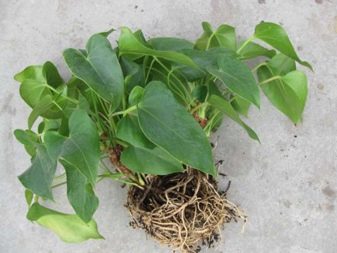
As soon as the first leaves appeared, it means that the cutting has begun. The most difficult thing is to grow anthurium from seeds, since it is not so easy to obtain high-quality planting material. It is best to have more than one plant in your home because the male and female varieties bloom at different times.
After pollination, the seeds are removed from the ripe berries. Remove the pulp, put it in a dry place for 1-2 hours. Then they are planted in the ground, barely covering them with earth. The mixture must be pre-processed. With a sufficient level of heat and humidity, the seeds will germinate in 5-7 days. Anthuriums, which are grown from seeds, will bloom only after 2-3 years.
To obtain a high-quality result, it is worth observing the following requirements:
- place the pot in a place with diffused sunlight;
- it is better to use a mixture of peat and sphagnum moss as a soil;
- the pot must be with high-quality drainage.
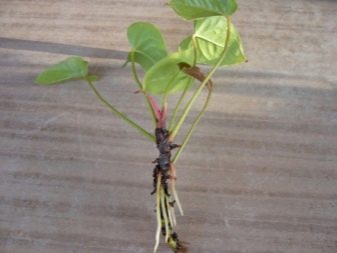
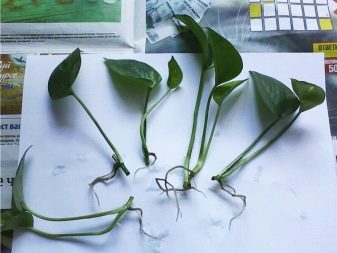
How to achieve flowering
Even under ideal growing conditions, anthuriums produce an average of 4 to 6 flowers per year. Mature plants bloom more often and produce larger flowers than younger ones. For flowering, you need to create favorable conditions.
- The flower requires rich, well-drained soil.
- Too little light can reduce or stop flowering.
- Watering is done weekly during the growing season.
- If the leaves lose their shine, then the humidity level in the room is very low. The plant is sprayed with water several times a week.
- Fertilizer with a high phosphorus content is applied monthly.
- Anthurium is transplanted every 2 years.
- The accumulated salts after feeding are washed out of the soil with good watering with distilled water.
It should always be remembered that anthuriums are toxic, so you should keep plants out of the reach of children and pets. Be sure to wear gloves when working with a flower, and wash your hands at the end.

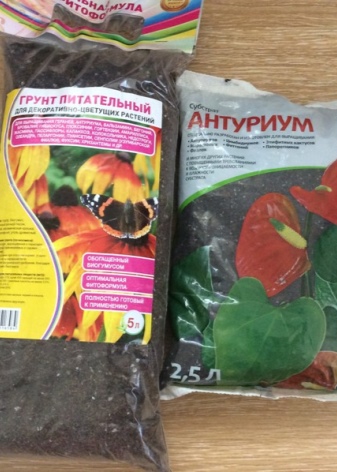
Care
Anthuriums grow well in pots, but they require careful maintenance and maintenance in order to be healthy and bloom all year round. These indoor flowers prefer slightly moist, light soil, warm air with moderate humidity levels.
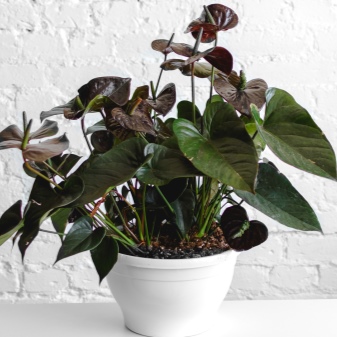
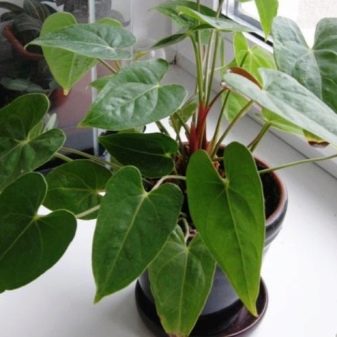
Lighting
Unlike many other flowering plants that refuse to bloom indoors due to insufficient lighting, anthuriums are very loyal to the shade. Indirect sunlight is ideal for the flower.
The soil
Anthurium prefers well-drained sandy to loamy soil. Peat moss, perlite and vermiculite can be added to provide better aeration. The plant loves acidic soils with pH in the range of 5.5–6.5.
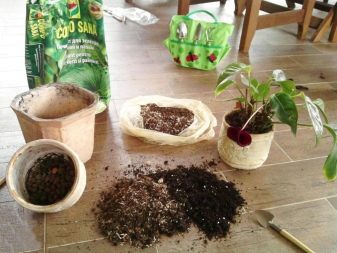
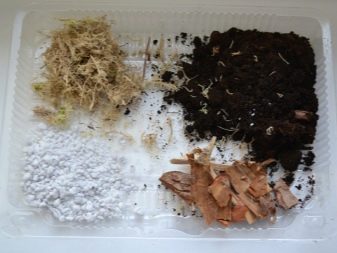
Watering
Anthuriums have a fairly low water requirement. Do not allow the soil to become too wet, since the leaves can turn yellow, respectively, the likelihood of root rot increases.
But the leaves should be moistened, so you can use a spray bottle.
Fertilizer
Application of fertilizers with a high phosphorus content promotes growth and flowering. Although many houseplants prefer balanced mixtures, anthuriums grow best. with fertilizing with nitrogen, phosphorus and potassium in a proportion of 5X10X5.
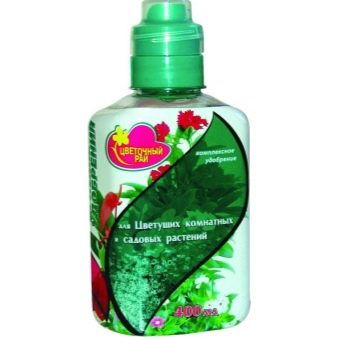
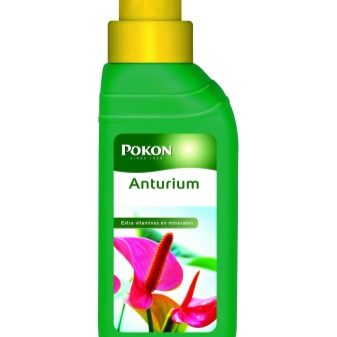
Parasites and diseases
Anthuriums do not suffer from a large number of pests, but mealybugs, nematodes and mites feast on the plant from time to time.Some of them tend to gather in fairly large groups and cause serious damage. If something like this happens, then you should use neem oil. It is difficult to see nematodes with the naked eye: they damage the roots of plants.
Yellowing of the leaves and their curling can be distinguished from the main signs of infection. To fight, you will have to process the root system, cut off damaged shoots and transplant the plant into another container. Insecticides are excellent for treating insects.
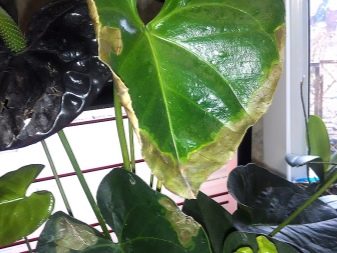

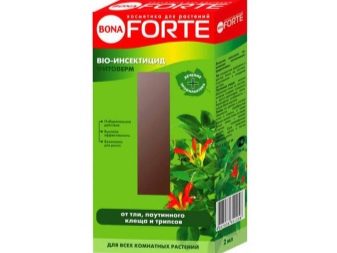

Anthuriums sometimes suffer from diseases typical of indoor container plants, such as root rot and powdery mildew. Most diseases can be prevented by providing the plant with adequate watering. If the fungus does appear, fungicides containing sulfur or copper work best.
As for bacterial infection, there are no effective control measures, it is better to eliminate the flower before it has infected other plants.
You can find out more about Anthurium with black flowers in the next video.































The comment was sent successfully.